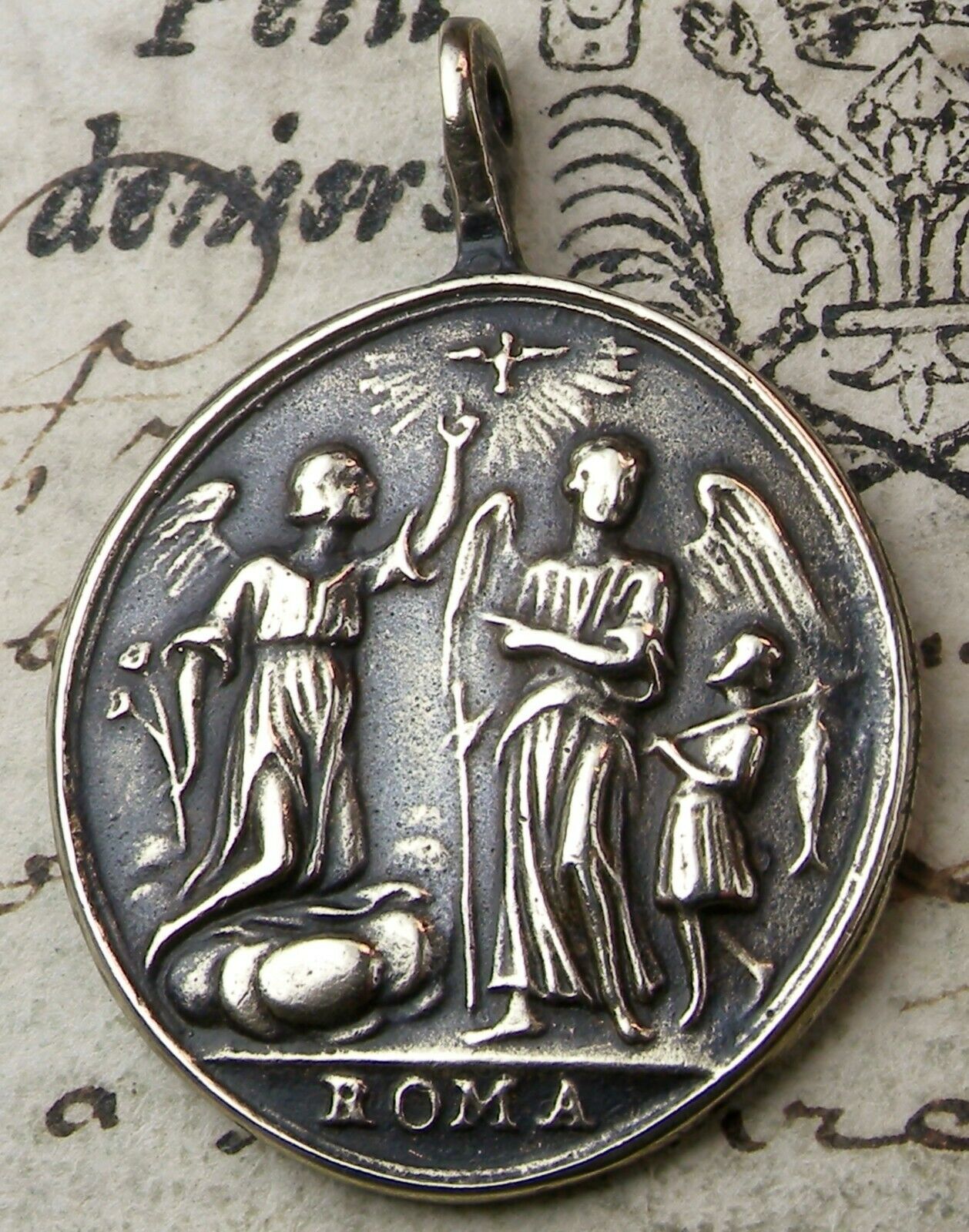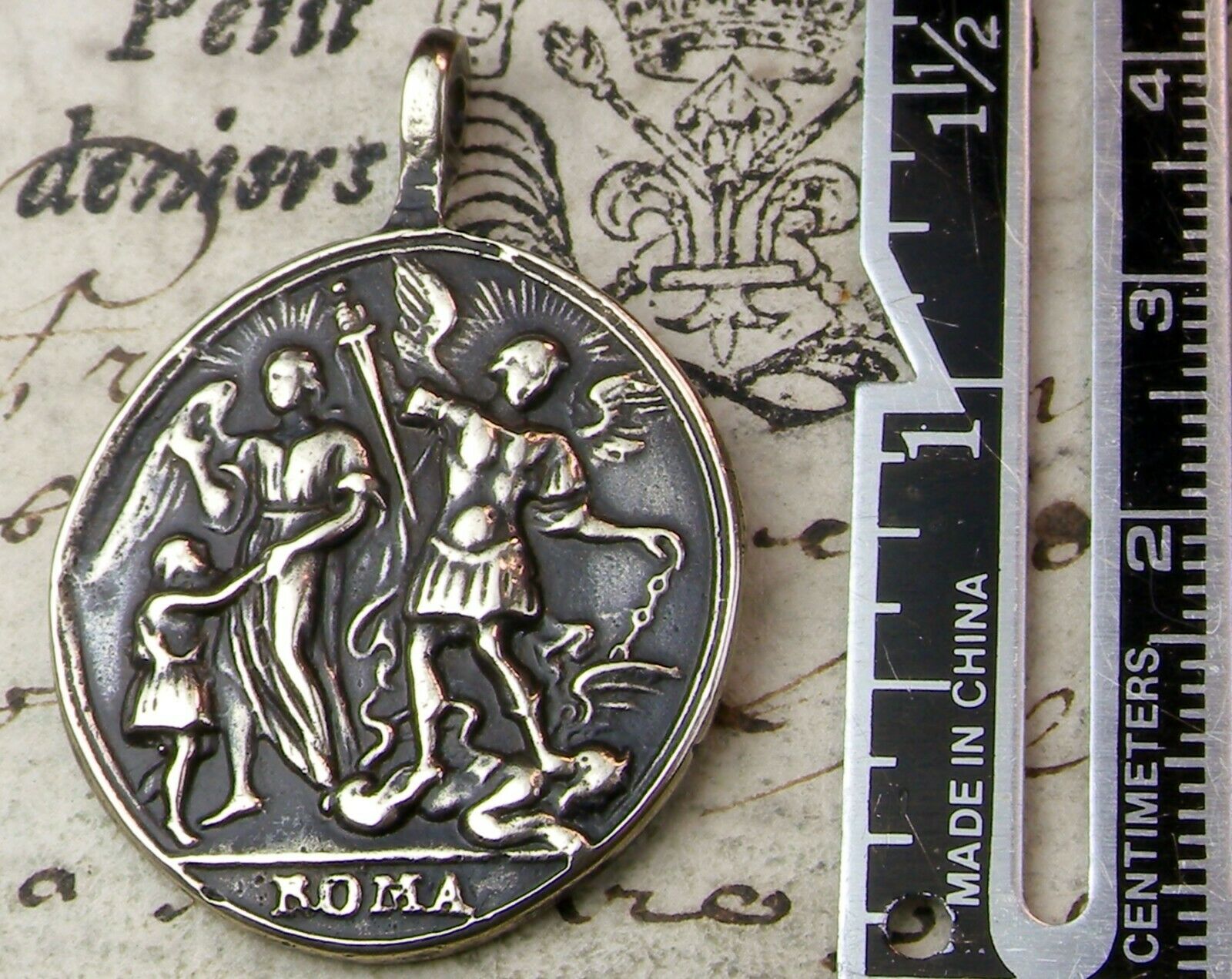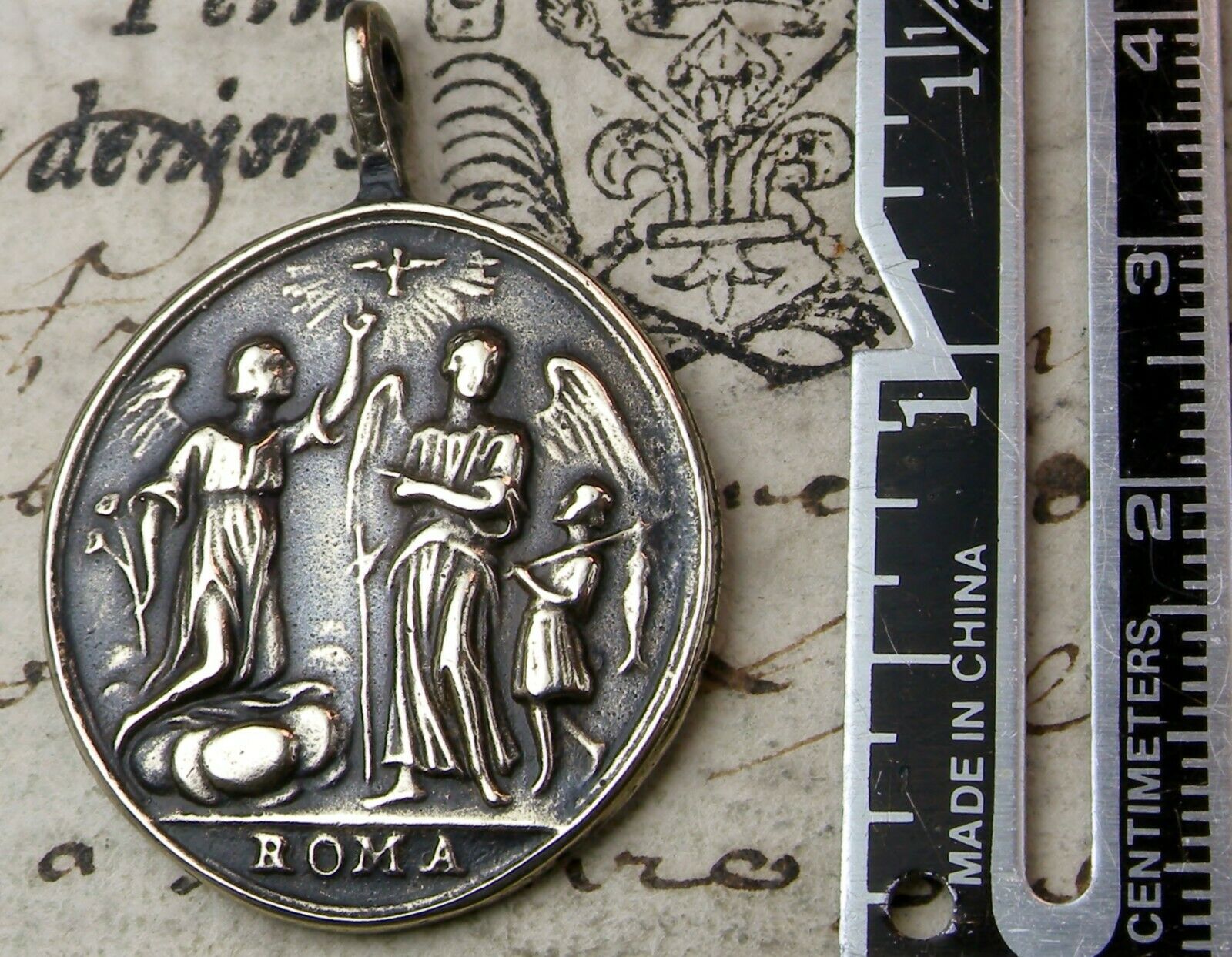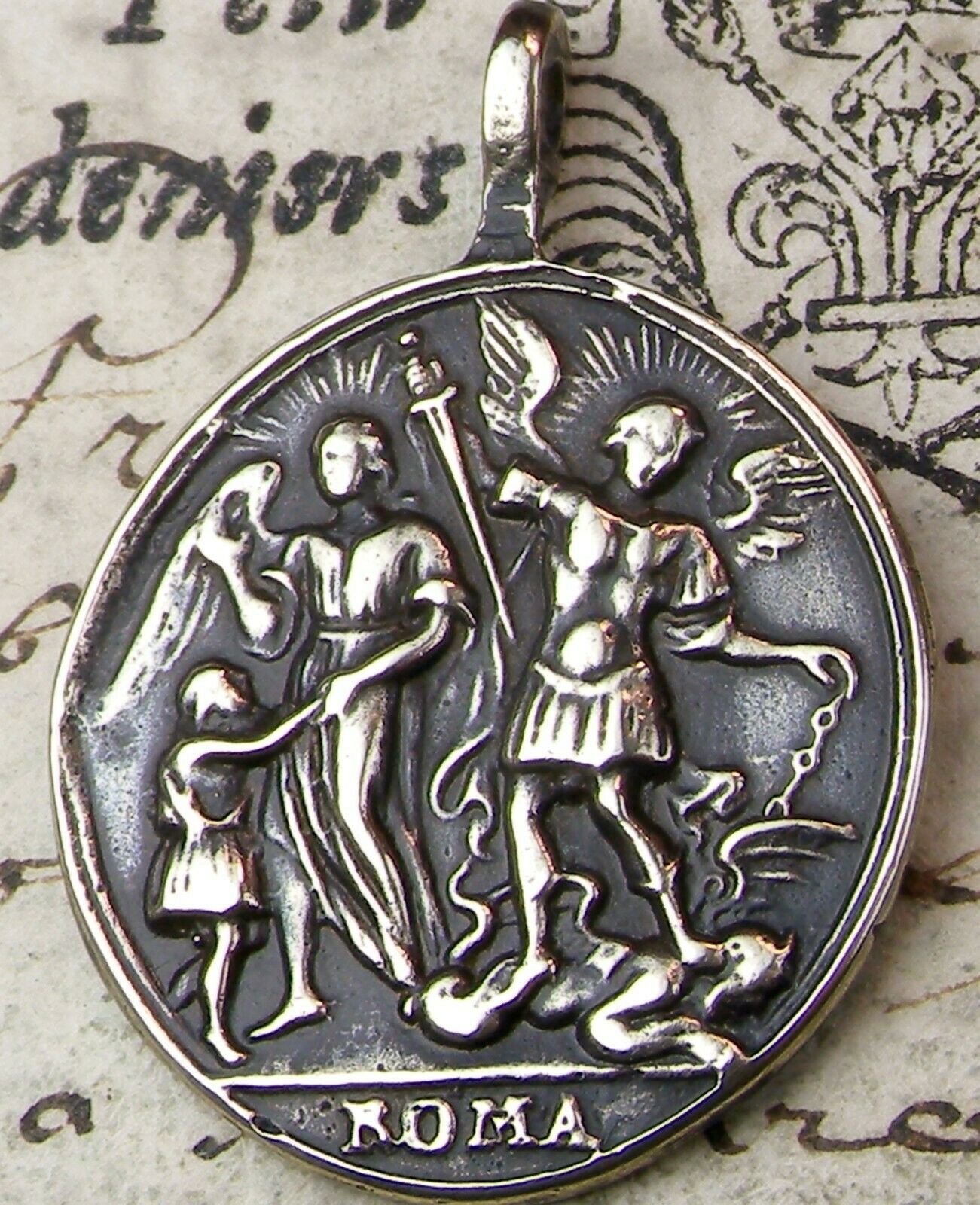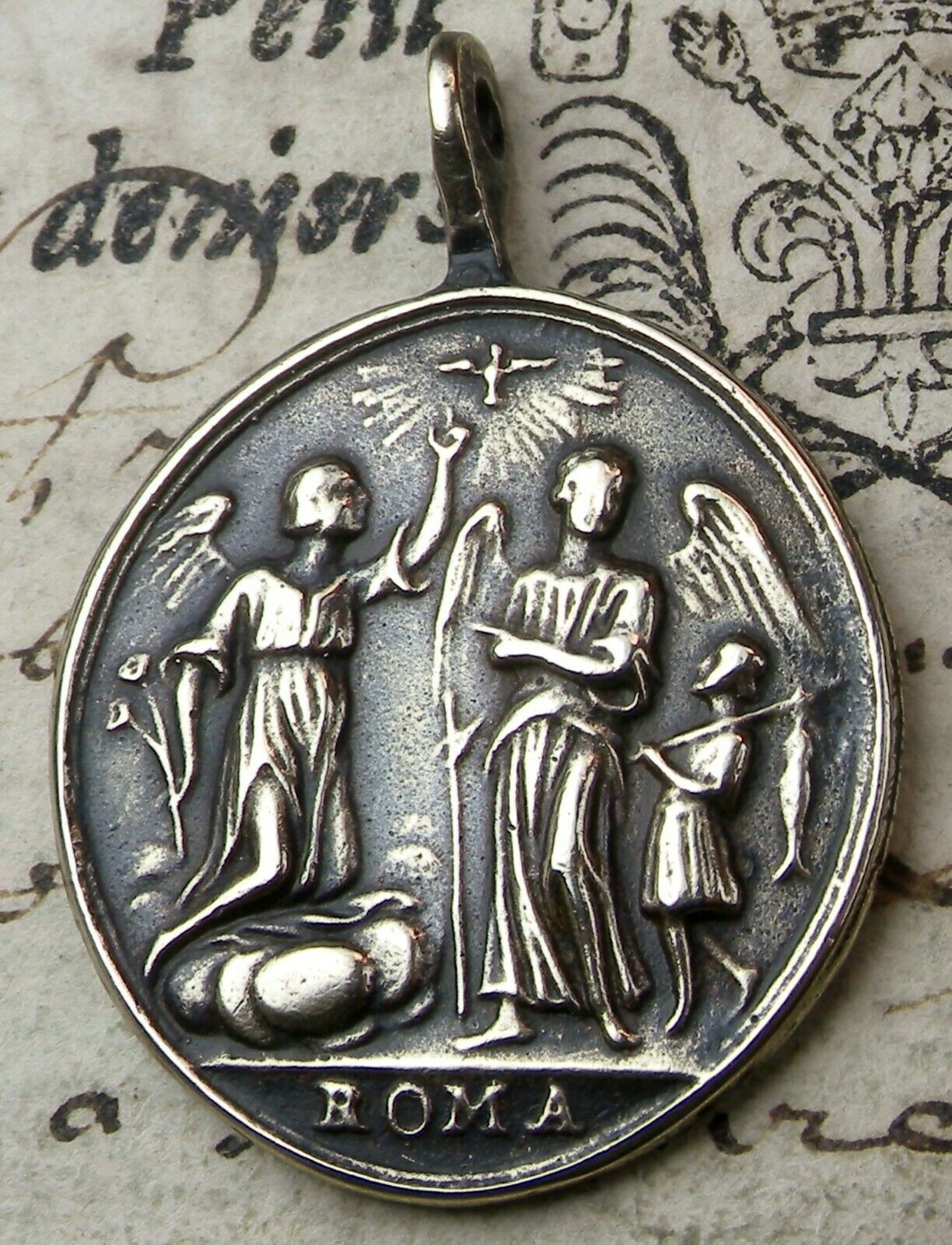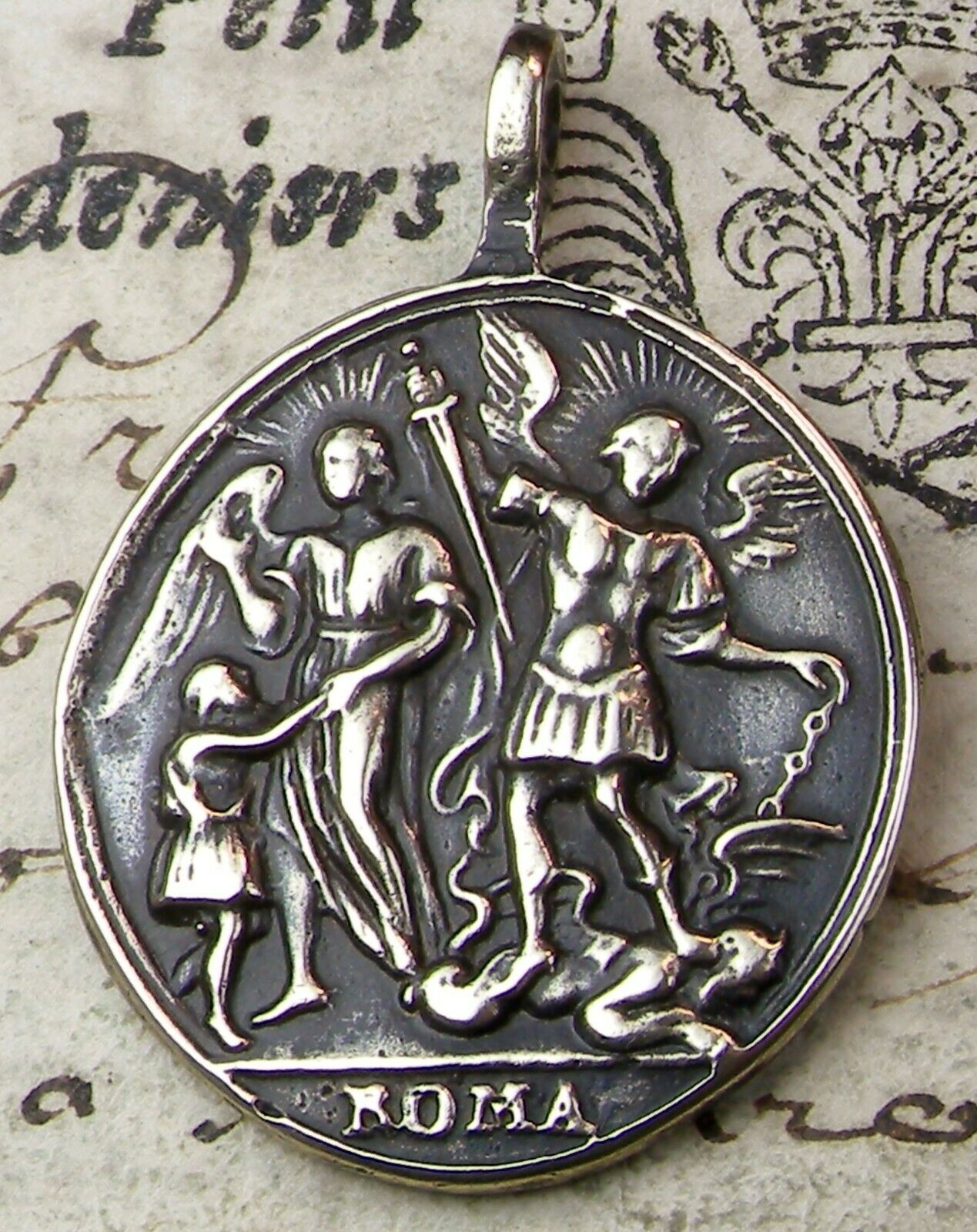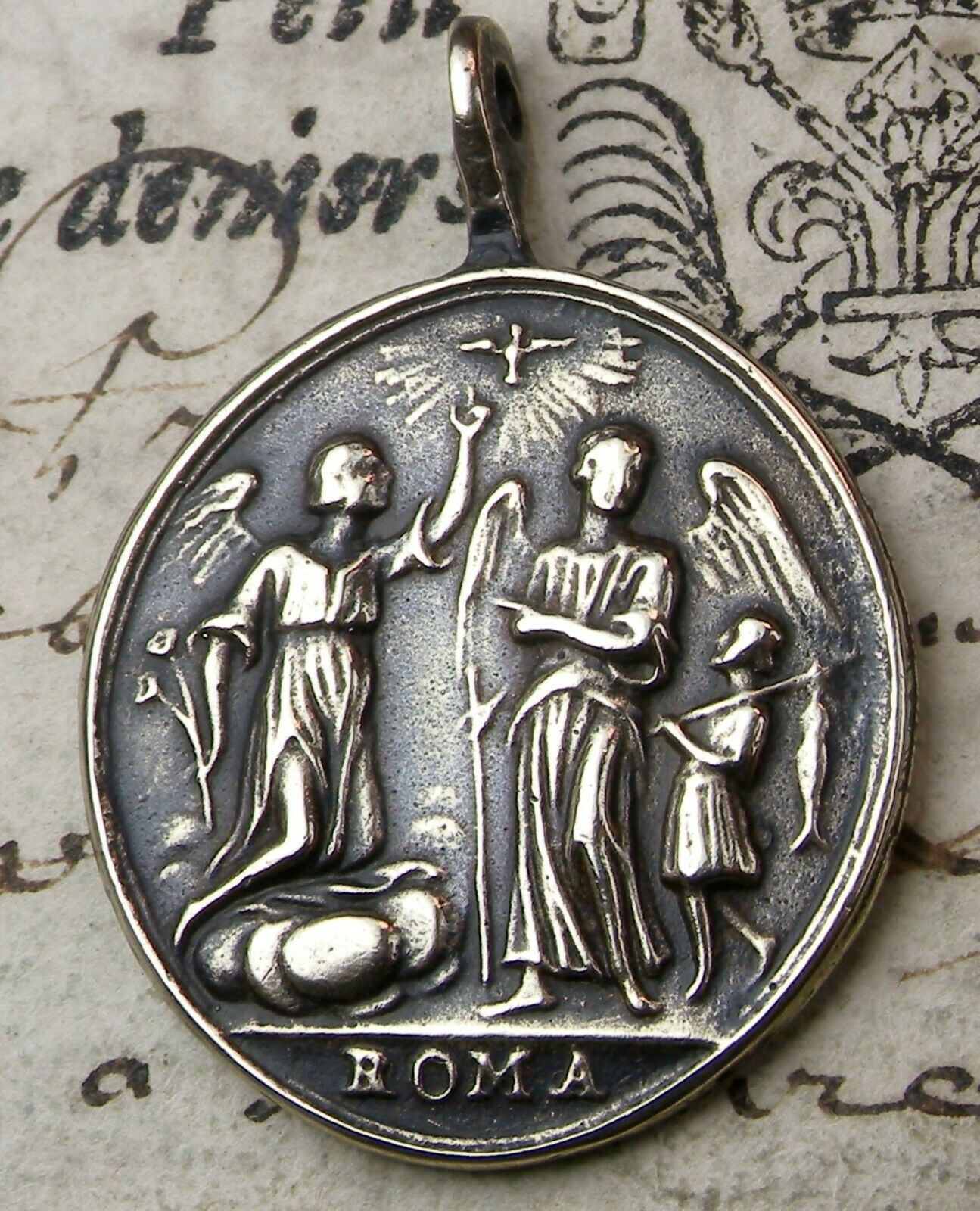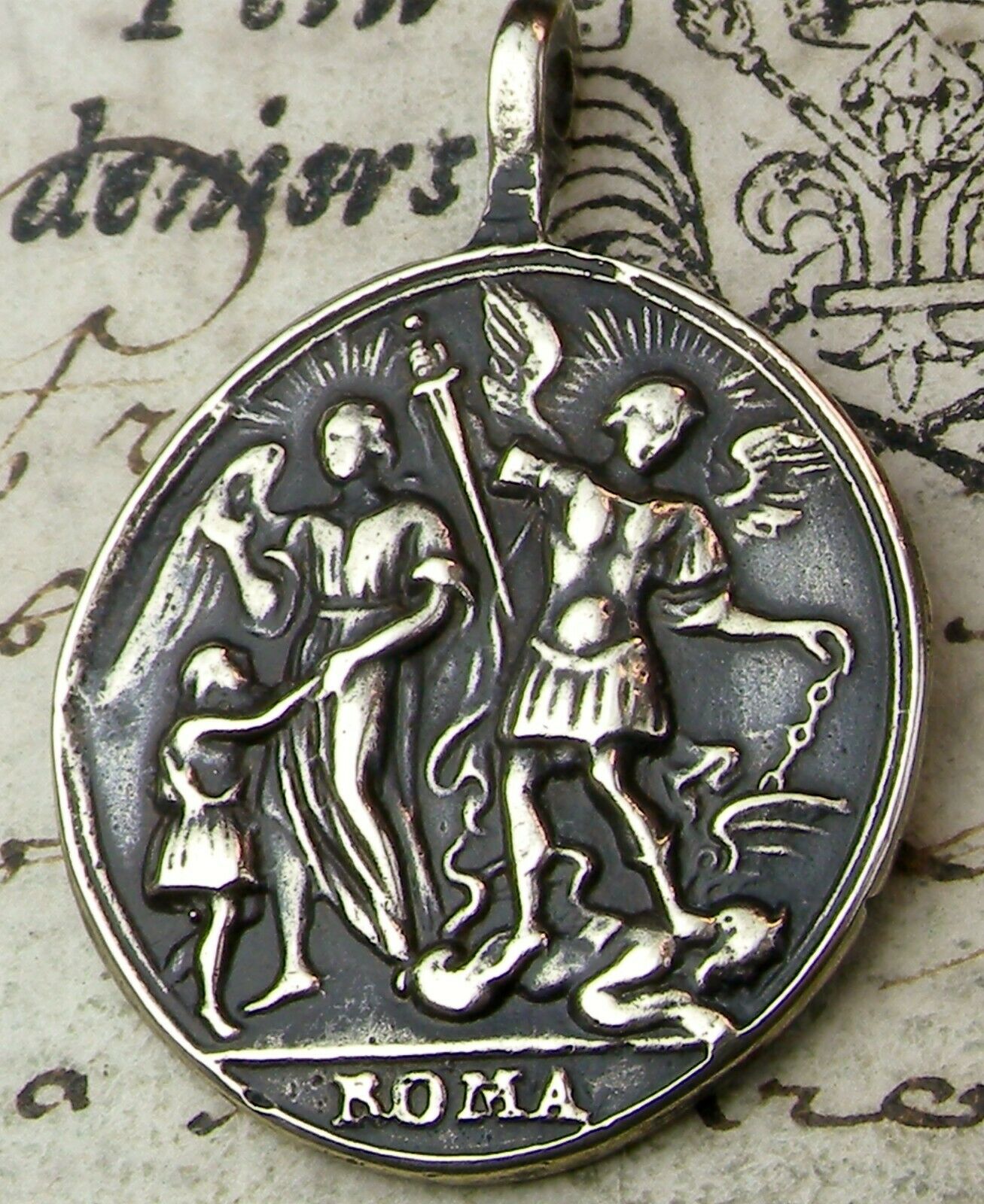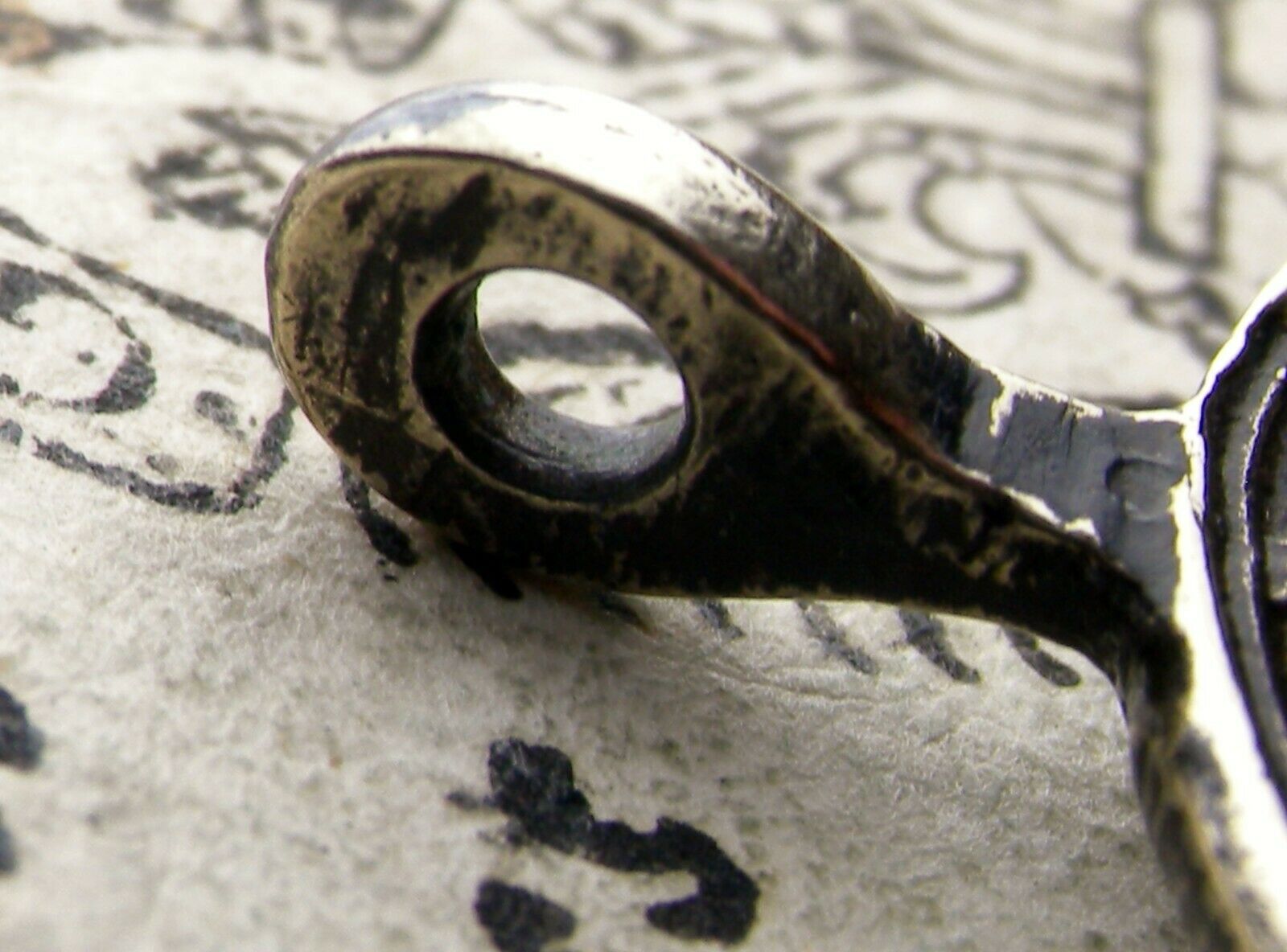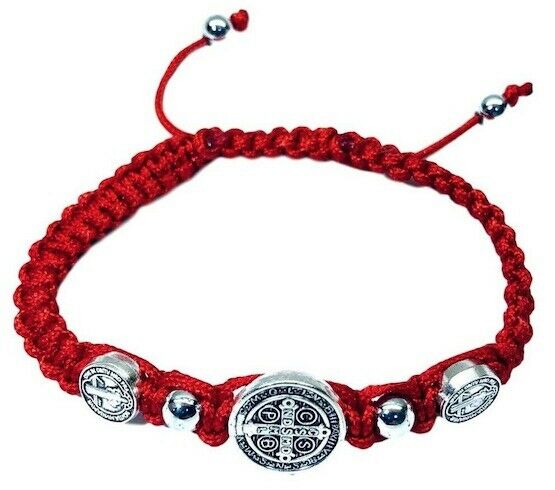-40%
SPANISH COLONIAL OLD TESTAMENT TOBIT & ARCHANGEL RAPHAEL & MICHAEL ROSARY MEDAL
$ 65.99
- Description
- Size Guide
Description
Here are the images are of Archangel Raphael St. Michael & Amadeus, ever present to those who pray, believe, and wear this beautiful and unique 18th century medal from the Papal States, minted in ROME.The name of the angel Raphael appears only in the Biblical Book of Tobit. The Book of Tobit is considered deuterocanonical by Catholics, Orthodox, and some Anglicans. Raphael first appears disguised in human form as the travelling companion of Tobit's son, Tobit (Greek: Τωβίας/Tobias), calling himself "Azarias the son of the great Ananias". During the journey, the archangel's protective influence is shown in many ways including the binding of a demon in the desert of upper Egypt. After returning and healing the blind Tobit, Azarias makes himself known as "the angel Raphael, one of the seven, who stand before the Lord" Tobit 12:15. He is venerated as Saint Raphael the Archangel. Regarding the healing powers attributed to Raphael, there is his declaration to Tobit (Tobit, 12) that he was sent by the Lord to heal him of his blindness and to deliver Sarah, his future daughter-in-law, from the demon Amadeus, who kills every man she marries on their wedding night before the marriage can be consummated.
In the New Testament, only the archangels Gabriel and Michael are mentioned by name (Luke 1:9–26; Jude 1:9). Later manuscripts of John 5:1–4 refer to the pool of Bethesda, where the multitude of the infirm lay awaiting the moving of the water, for "an angel of the Lord descended at certain times into the pond; and the water was moved. And he that went down first into the pond after the motion of the water was made whole of whatsoever infirmity he lay under". Because of the healing role assigned to Raphael, this angel is generally associated with the archangel.
This medals dating can be confirmed on pages 2 & 3 of the book AN INTRODUCTION TO RELIGIOUS MEDALS, by Bob Forrest, and published by NUMISMATICA INTERNATIONAL in 2004.In addition this book has chapters (outlined in the table of contents), describing each of the categories of medals, their possible place of pilgrimage (acquisition), and origin of the mint where they were made. We recommend that anyone serious about collecting medals from this period, acquire a copy of this book.
Thanks for your kind support of our work!
